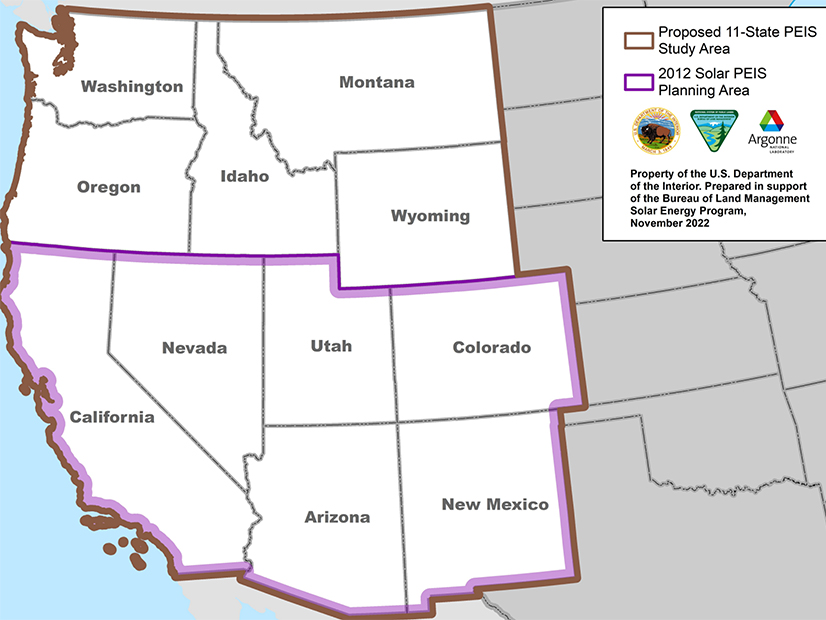Pacific Gas and Electric (NYSE:PCG) is getting pushback on its proposal to place most of its generation fleet into a new company and to sell nearly half of the firm to investors after seeking FERC approval for the plan last month (EC23-38).
“Pacific Gas and Electric Co. submits this application requesting commission authorization for a proposed transaction whereby PG&E will transfer substantially all of its non-nuclear generation assets to its new wholly owned subsidiary, Pacific Generation LLC, which jointly with PG&E will provide cost-based generation service to retail customers within PG&E’s existing service territory,” the utility said in its Dec. 13 application to FERC. “The transaction will facilitate a subsequent sale of up to 49.9% of the equity interests in Pacific Generation to one or more third-party investors.”
PG&E valued the assets — 5.6 GW of hydroelectric dams, solar arrays, natural gas plants and utility-scale battery installations — at $3.5 billion. The facilities include its 182.5-MW Elkhorn Battery project, one of world’s largest battery arrays, and the 1,212-MW Helms Pumped Storage Project, considered an engineering breakthrough when it came online in 1984.
Once PG&E transfers the generation fleet to Pacific Generation, it intends to issue a long-term debt of up to $2.1 billion on the assets to refinance existing debt.
The company contended the transaction will “strengthen PG&E’s financial condition; allow PG&E to more efficiently access equity capital to fund significant capital requirements to improve the safety and reliability of its system; and be consistent with PG&E’s path to an investment-grade credit rating.”
Its stock and credit rating plunged following a series of catastrophic wildfires in 2017-2018 and its filing for bankruptcy reorganization in January 2019. The utility’s stock has recovered some of its former value, hovering in the $15 to $16 range since October, but it remains far below its peak of more than $70/share in August 2017.
PG&E requested expedited FERC approval by March 1 because it intends to initiate its sale to investors before the end of the first quarter.
The utility filed a similar application with the California Public Utilities Commission (CPUC) in September, also seeking expedited review.
Both applications earned protests from cities, consumer groups, community choice aggregators and the Transmission Agency of Northern California (TANC), which serves publicly owned utilities. Most of the protesters urged FERC and the CPUC to slow down the approval process to gather more information and assess whether the plan is in the public interest.
“As transmission customers, TANC and its members that require PG&E or CAISO grid transmission are concerned that the proceeds from the proposed sale will not benefit PG&E transmission customers,” the agency wrote.
It urged FERC to find PG&E’s application deficient and require the utility to explain how it valued its generation assets at $3.5 billion and decided that Pacific Generation could take on $2.1 billion in long-term debt.
Public Citizen, a consumer advocacy group, told FERC that PG&E shouldn’t be allowed to monetize its ratepayer- funded generation fleet after causing a series of catastrophic wildfires.
“PG&E justifies using consumer-funded assets as a mechanism to raise assets because of financial pressures stemming from the company’s 2019 bankruptcy (from which it emerged in 2020),” the group said. “But PG&E’s financial challenges stem not from bad luck, but from the corporation’s repeated criminal negligence.”
The company was convicted of violations related to the 2010 San Bruno gas pipeline explosion that killed eight people and pleaded guilty to 84 counts of involuntary manslaughter for its role in starting the 2018 Camp Fire, which destroyed the town of Paradise.
“Consumers should not bear risk because of PG&E’s repeated criminal malfeasance,” it said.
In addition, Public Citizen said the utility had “failed to provide documentation and analysis necessary for the commission to determine if such a proposed transaction will result in just and reasonable rates, or will harm consumers.”
“As a publicly traded company, PG&E has a number of other less disruptive means to raise capital,” it said. “To ensure conformity to just and reasonable rates, the commission should require PG&E to provide analyses of alternative capital-raising strategies, including the impact on ratepayers of issuing more shares. PG&E’s sole proposal — selling off equity in rate-base generation — prioritizes investor benefits at the expense of risk to consumers.”
Parties expressed similar concerns before the CPUC, urging the state regulator to take more time to consider the full ramifications of PG&E’s proposal.
For instance, The Utility Reform Network (TURN) said PG&E’s application involves at least 50 issues that need to be resolved, including 42 identified by PG&E in its application. TURN highlighted eight additional issues, including whether the deal would leave PG&E and Pacific Generation too deep in debt and whether its benefits would flow to shareholders and not ratepayers.
“The resolution of many of those issues requires complex financial modeling to demonstrate whether PG&E’s asserted financial outcomes are likely to be realized, or whether PG&E’s proposal introduces additional financial risks,” TURN said. “The consideration of these serious implications should not be glossed over for potential shareholder benefits. …
“As part of its application, PG&E requests an expedited schedule and claims that the request is justified because there is a ‘need to resolve a financial matter expeditiously to avoid ratepayer harm,’” the group said. “As an initial matter, the only ‘financial matter’ here is one that is being created by PG&E itself, not by external forces or circumstances.”
It asked the CPUC to extend its briefing schedule, postponing a decision in the matter until at least later this year.
